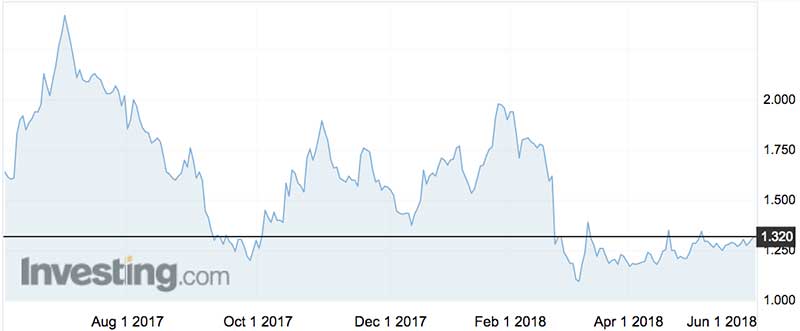Catapult considers how to fling itself forward as wearables show signs of wearing out
Tech
Tech
Soaring popularity on the back of a wearable technology boom amid high demand for FitBit trackers saw the share price of Catapult surge in its first year as a public company.
But it has been a steady decline since — not helped by a regular bout of share issues as it has hit the market for additional funds every year since its IPO at the end of 2014.
Catapult (ASX:CAT) is seeking to build out a presence in the athlete tracking business, moving to diversify more recently into what it has dubbed the ‘prosumer’ market.
But getting traction – and earnings – is proving elusive as early optimism has faded.
In mid-2016, Catapult shares topped $4 — a far cry from the $1.30 or so they are changing hands for these days.
Much has been written about the decline of the wearables market in recent years. Without Apple, the wearable market would have shrunk late last year, according to research from IDC.
Like Fitbit’s share price, which has fallen steeply over the past three years, Catapult shares have also lost favour.
Catapult raised $12 million at 55c a share when it went public, following that up with a $6 million raising at $1.42 in November the next year, another $100 million in mid-2016 at $3.
Then there was a further $14 million at $2 in May 2017 and another $25 million at $1.10 in March this year.
Nor is it any closer to making a profit, which has been pushed back to around 2021 at the earliest, causing one of the company’s supporters since the initial public float, stockbroker Bell Potter, to slash its profit forecasts for the company.
It now has a ‘hold’ on the shares and a valuation of $1.50.

When raising capital through the market in March, Catapult said it “does not anticipate requiring additional equity funding before becoming cash flow positive” which Bell Potter told clients it takes as meaning the company doesn’t expect to become cash flow positive until FY21 and that free cash flow will be negative in each of the three next periods (FY18-FY20).”
Previously, the broker thought Catapult would generate positive free cashflow in fiscal 2019.
Since going public, Catapult has raised close to $160 million which has funded a series of acquisitions as it has tried to carve out a profitable presence in the athlete tracking business.
Finding it difficult to build a sustainable business working with professional athletes, it is now also going after what it calls both the elite and the ‘prosumer’ market, initially soccer players trying to break into the professional market.
But while share market investors are on the back foot in buying shares in the company, the most recent placement has seen institutional investors such as UniSuper and AustralianSuper emerge with holdings of more than 5 per cent of the shares.
New CEO and CFO appointments over the past 14 months or so have been made as the company has tried to
At the moment around 1600 teams use Catapult gear, a 16 per cent penetration of the market, and it reckons another 10,000 teams or so worldwide are potential customers, although just when it expects to get close to this figure is unclear.
By way of comparison it reckons the soccer ‘prosumer’ market is around 20 million, or around half of the soccer playing market.
New CEO and CFO appointments over the past 14 months or so have been made as the company has tried to kickstart its ambitions.
Catapult did not respond to requests for comment prior to publishing.